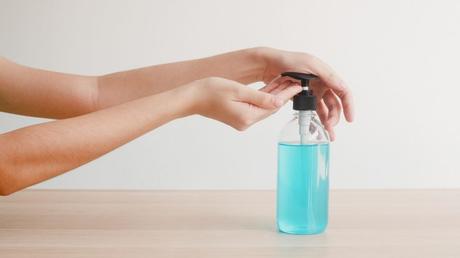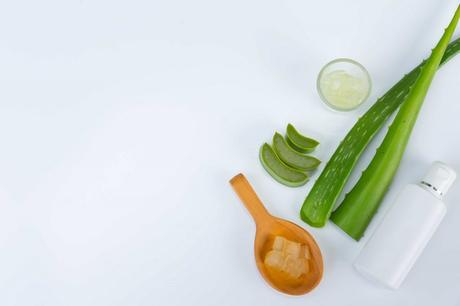Covid-19 has changed many things for a lot of people. One such thing is hand hygiene and cleanliness. What was once considered and an item of convenience is now highly essential for everyday life. With this perception change, many manufacturers, stores, and supermarkets have been unable to fulfil commercial demands.
Nonetheless, people who are not able to get sanitizers from the local store can make their own right from home. Homemade sanitizers not only serve to fill the gap caused by shortages but provide the environmentally conscious with a natural and zero-waste alternative.
Additionally, this allows people the opportunity to be in complete control of all the components of the products they use, therefore steering clear of harsh chemicals that could be found in some store-bought brands.

Why You Should Use Hand Sanitizer
When you step outside your door every day for your daily activities, you are constantly exposed to germs and bacteria.
Whether it is the cart at the supermarket or the surface counter at the bank, germs are not short of spaces where they can live and thrive. This is now made more prevalent in the wake of the novel coronavirus, Covid-19, where every person is required to do their part in flattening the curve.
Covid-19 is a virus that causes flu-like symptoms. It can have severe respiratory effects that have proven fatal for thousands of people. At present, there is no cure or vaccine, and healthcare systems in most countries are immensely burdened. Infections and fatalities are also increasing everyday and people are encouraged to socially distance themselves to curb the spread of the virus.
The CDC recommends simple practices such as washing your hands with soap and running water as often as you can. However, this could prove difficult to do while on the move. Therefore having a hand sanitizer that is both convenient to carry around and effective in killing germs is a great solution.
By placing a few drops on the palms of your hands and rubbing the liquid through your fingers and hands for 20 to 30 seconds, you can effectively kill germs and reduce your risk of contracting or spreading Covid-19.
Hand sanitizers made from aloe vera are a great way to not only stay safe from the virus but provide that much-needed moisture from the drying effects of alcohol.
It is, however, important to note that since these hand sanitizers are homemade, they have not undergone the rigorous tests conducted by industry experts. They therefore cannot be mentioned in the same breath as store-bought hand sanitizers that have scientifically tested as per industry standards.
Ingredients Needed for the Recipe
To make gel sanitizer you will need rubbing alcohol or isopropyl, because of its high alcohol content of over 90%. However, if this is unavailable you can substitute with high proof grain-based alcohol that has a high alcohol content.
CDC guidelines state that for a hand sanitizer to be considered effective it must have an alcohol content that is no less than 60%. Therefore you must seek out a high proof drink with an alcohol content higher than 75%. Regular vodka may not cut it as its alcohol content will continue to reduce once other ingredients are added in rendering it ineffective in killing germs.
You could opt to add a few drops of essential oil of your choice into your hand sanitizer. Although this is not a mandatory step it does have its fair share of perks. Not only does it help improve the moisturizing effects, it also helps in the killing of germs.
Additionally, essential oils will give your hand sanitizer a great scent and that is always a plus. Tea tree oil, for example, possesses great anti-bacterial properties while lavender oil is useful in treating fungal infections.
A few drops of peppermint oil would also be useful to treat pain as in aromatherapy. This oil is also great at soothing itchy skin. However, if you don't have these oils on hand, a few drops of lemon juice will serve as a great substitute because of the fruit's antimicrobial properties .
Last but not least, you will require an aloe vera plant from where you will extract the gel. If you have the plant at home then one spear should be enough. However, if you do not have it on hand, many stores should have it in stock at a very affordable rate.
The gel from aloe plant requires a bit of skill to extract, although if you're familiar with filleting fish, then it should not be too hard. Here's how you should do it.
Read More:Cutting Fresh Aloe Vera

A single spear should be enough to give you a cup of aloe vera gel. Fresh aloe tends to be slimy and sticky so be sure to keep that in mind while cutting. Remember to use a steady board and a sharp knife for great results.
You will want to start at the base of the plant. This part should look more white than green so make sure you cut it off. You can also cut off the tip since it could prove difficult to work through because of its thin nature. With the part of the spear that you have left, find a part that is about 3cm thick and slice through it.
Some sap may leak out at this point accompanied by a musty smell but do not worry. This is all a part of the process. You should be working with the chunkiest part of the aloe which contains the gel.
Use your knife to cut under the outer green layer of the aloe plant. Start with a small incision and make the cut deeper as you move along. Once you have fully sliced it open, you can proceed to gently peel the rest of the outer layer off the plant using your hand.
Continue with this process, and repeatedly peel layer after layer until you have split it in half. Be careful as you go along to keep the layers you peel as close to the edge as possible.
When you have reached the centre simply use a spoon to scoop out the gel. Rinse it under cold water for a few minutes to remove any unwanted sap.
Since this sanitizer will only require you to use about a 1/4 cup of aloe gel, the rest can be kept frozen for up to 3 months for further use. Aloe vera is packed with a long list of benefits. It has great soothing and moisturizing qualities hence making it great for burns treatment.
It is also very useful as an anti-inflammatory agent. Aloe gel is useful not only for the skin but for your digestive tract as well. Thus, it is a great addition for your juices, soups and smoothies.
Making Fresh Aloe Hand Sanitizer
Now that you have your ingredients ready, you will start by liquefying your aloe gel. It might prove a bit difficult to mix well with the other ingredients while in its gel state so blend it up if possible to reduce the chunks in the aloe extract.
After a quick 30 second blend, measure the required 1/4 cup and add in your 3/4 cup of rubbing alcohol. Feel free to blend it as well to ensure a thorough mix.
It is at this point that you can add 10 to 15 drops of the essential oil of your choice. Add the mixture to a small bottle of your choosing. Give it a good shake and you are ready to go. This hand sanitizer should last you up to 3 weeks so be sure to make good use of it.
There has been a debate on whether it is more effective to wash your hands or sanitise. The World Health Organization (WHO) recommends the washing of hands as often as you can while using clean running water. And when you cannot, use your hand sanitizer.
It is important to note that one should not rub hand sanitizer on greasy hands as it will not be effective. Sanitizers with an alcohol content much higher than 60% could cause your hands to dry out and this could result in minor cuts. If left unchecked, they could lead to infections. As such, it is important that your hands stay moisturized.
Act Fast Before Things Get Out of Hand
As many people across the world continue to battle with the worldwide pandemic, it is important to align with the WHO guidelines. Arm yourself with hand sanitizer when you go outside at all times and remember to wear a mask. Follow the steps above carefully and you should have a steady supply of hand sanitizer.
Social distancing and staying at home are also important measures to help curb the spread of the virus. Your safety and of those around you should be a priority. If you happen to feel unwell and suspect you may have been in contact with someone who had the virus, then call your doctor for guidance on the process of testing.

